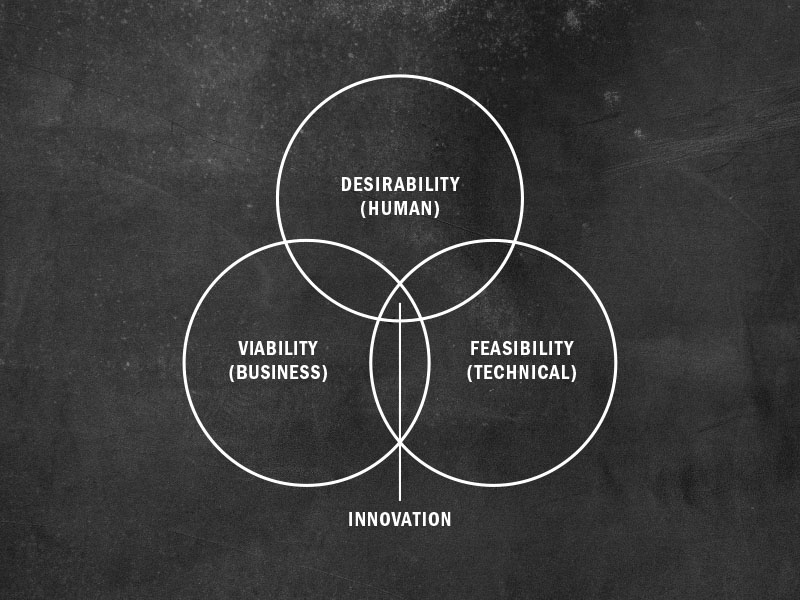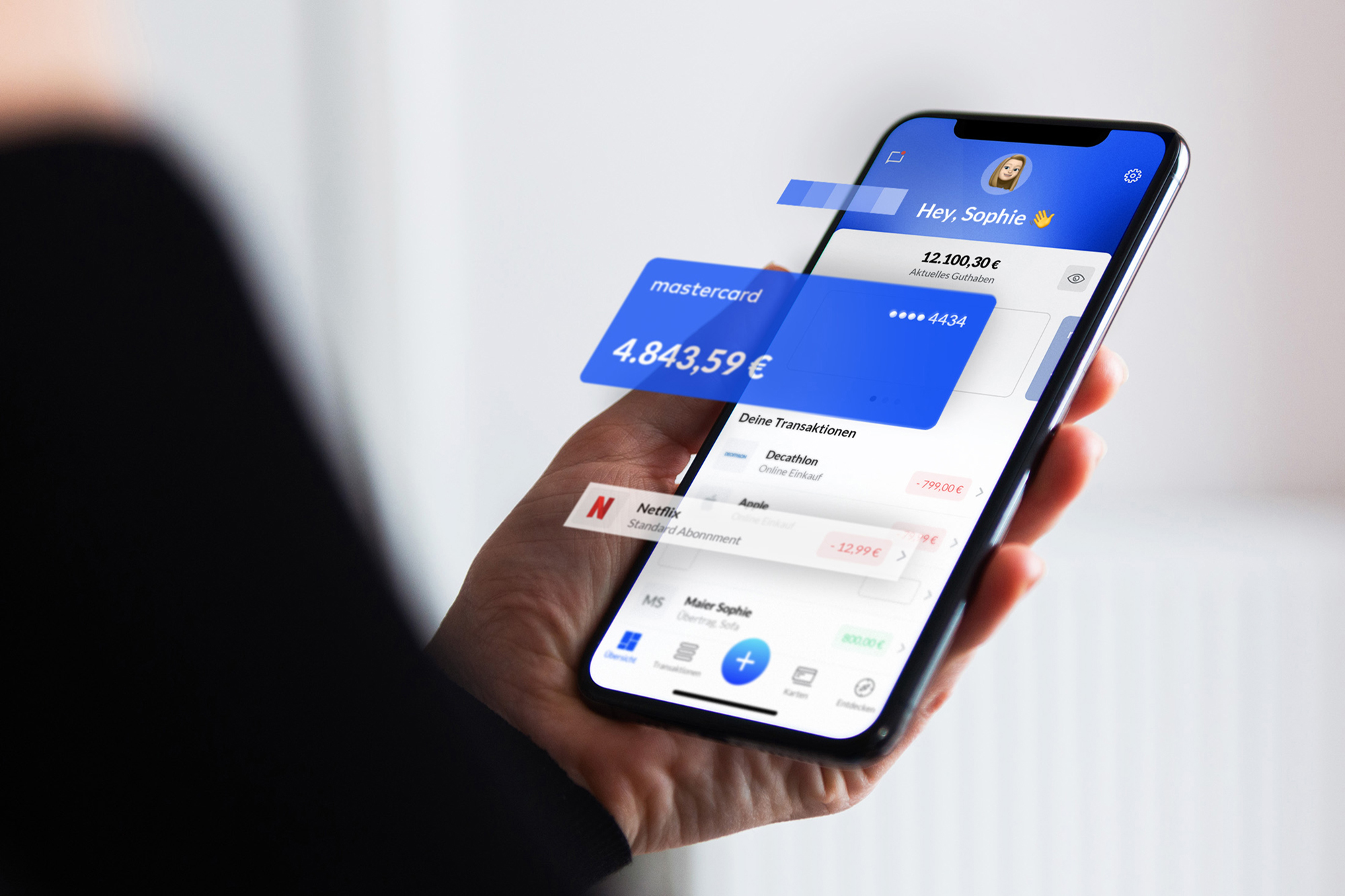Myth 1—“Design thinking is mainly suitable for developing creative and crazy product innovations”
Design thinking is very useful for brilliant human product designs. The innovation method developed in the Silicone Valley can be applied, however, for strategies, processes, business models, scenario development, services and project road mapping sessions just as well. In short—design thinking can be used whenever there is room for new ideas and solutions are yet to found.
Whether the design thinking project results in a flying pizza drone or simply in a customer-friendly ordering process does not depend on brainstorming, but on the selection of ideas. It is therefore up to the clients to decide how much the idea is “out of the box”. What really matters is that solutions are consequently designed with a focus on the clients.
The true advantage of design thinking is revealed when dealing with “wicked problems”. These are extensive social, political or economic problems for which no ad-hoc solutions can be found. Examples for such problems are the refugee crisis or the aging world population. If the solution is a product, a service or a communication campaign, will only be revealed in the course of the project.
Myth 2—“Design thinking produces faster results”
“Rapid prototyping”, “fail early and often”, “1,000 ideas in one hour” are key tenets which everybody who has taken a design thinking workshop has come across at least once.
If it is only about being fast, we would like to bet: we can brainstorm more ideas in one hour and are therefore significantly faster than someone who goes through the design thinking process. And our second bet: even if the design thinker comes up with only ten ideas, these will be better than our 100 ideas taken together. Why is that? Design thinkers take quite a lot of time to explore human needs first and then ask the right brainstorming question. The motto is here to think from the client to the solution and not from the product to the client. The magic of design thinking is the quality of results.
However, there are elements of speed inherent to design thinking: we test prototypes at an early stage and collect feedback. Workshop participants consider “time boxing”—allocating work activities to short time slots—a fast and efficient way of working.
Myth 3—“You need to be creative for design thinking”
Design thinking is a process for rediscovering your creative self-confidence that we all used to have as children. But the school and assessment systems destroy the faith in our own creativity. “You cannot draw”, “Sing in front of the class. You’ll get an F”, “Don’t copy!”. We have all heard these. Today’s work reality in banks has seen many employees forget how to use their creative potential. Don’t we all know those hierarchical solution finding approaches filling pages and decision papers? The decisions will be taken after four or six weeks, if you are lucky. Does this leave any room for an agile approach or the need to let creativity unfold?
The biggest asset of design thinking—the playful thinking, the courage to try something new, the curiosity for other people’s lives, the cooperation with others—is what it takes to understand the world when growing up.
Design thinking is a method for bringing back the natural discovery of the world into a professional context and back into the working world. Everybody has a creative potential and design thinking helps to bring it back to light. Design thinking also stands for a changed working culture which promotes interdisciplinary team work and thus automatically boosts the creative self-confidence of your employees.
Myth 4—“Design thinking is simple and easy to learn”
There is no need for six years of studies to learn design thinking. You will experience and understand within just one hour that design thinking is about user needs and get to know the process with simple tools within one day. Design thinking is open source magic!
Design thinking is, however, more than just a sequence of tools and methods. Design thinking is a way of thinking that starts to be implemented in many people’s private lives, too. It takes design thinkers several months of intense approach and hands-on experience to be able to find the right tool in any situation, to identify the actual user needs and to instruct others.
It can be compared with yoga: I become familiar with the exercises and can follow the instructor after some yoga lessons, I get to know the philosophy after several months, I discover books and start to apply what I have learned and I can become an instructor and pass on my lifestyle after years.
Myth 5—“It takes only a few design thinking workshops to make any corporate group as creative as a start-up company”
The question is: why should a corporate group work like a start-up? Does Controlling need to find a new creative way every day to manage a bank? Does it make sense that a pilot tries to find new creative ways to start a plane at short notice? As a passenger, I would say: I hope not.
Design thinking is a hype. Companies try to train their employees as fast and comprehensively as possible and at the lowest costs possible to become more creative.
Establishing a user-oriented thinking in employees’ minds helps improve the quality of work. If companies take it seriously, they create design thinking labs or train a small group to become the design thinking guerilla and to contribute to projects if required. Design thinking can develop its biggest potential if the framework for new ideas is set: room for creativity, time slots and mental freedom for the management level. Design thinking takes time and the insight that it can result in “errors” or ideas outside of the core business.
For the working world, this means that we need to have the courage to introduce not fully elaborated ideas to the market—if we want to respond quickly to our clients’ needs. This means “trial and error” by early testing with real customers and by including customer feedback. Be brave and simply try it out!
Only after this fundamental paradigm shift has happened, projects have been viewed from different perspectives, a common language has been found and the approach is truly open to results, has the company really reached the actual design thinking process.





2 responses to “5 Myths about Design Thinking”
Alok Gupta
Well articulated article on design Thinking.
Karim NAFIE
Suitable for all needs, mature prototypes, stimulating creativity, simple to practice and creating a culture of thinking.
With simple words, this article clarifies some thoughts that exist about #designthinking